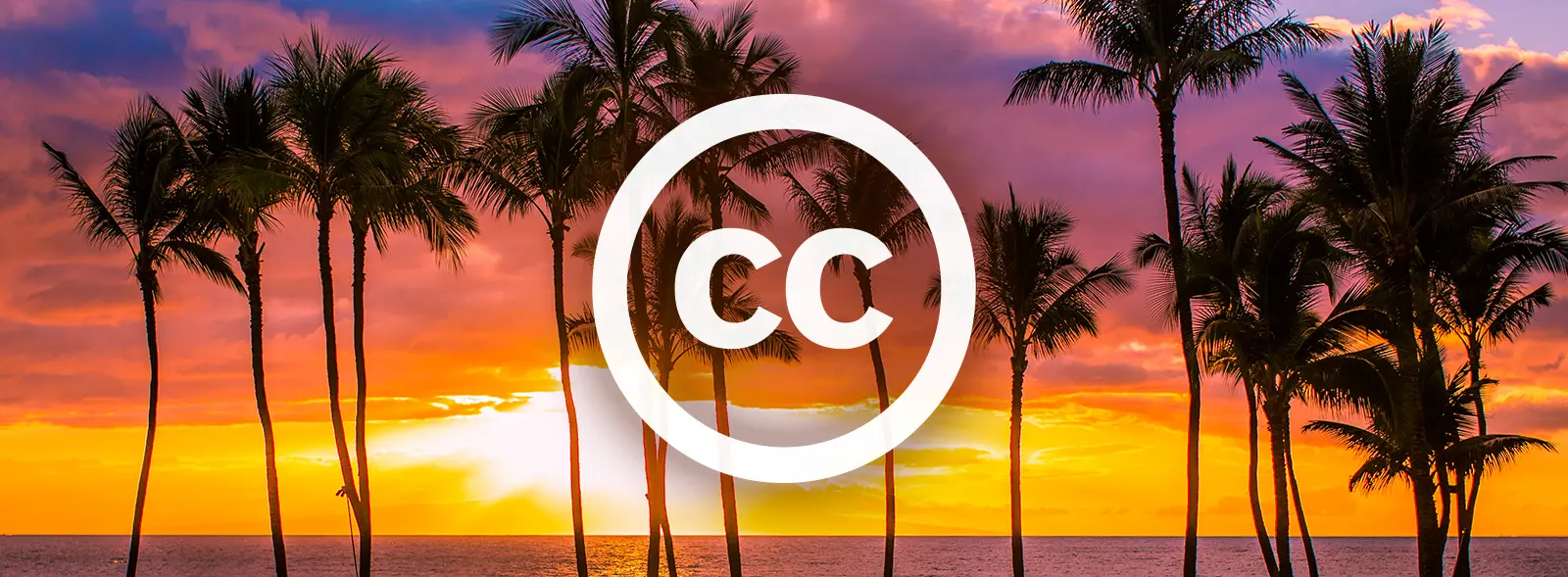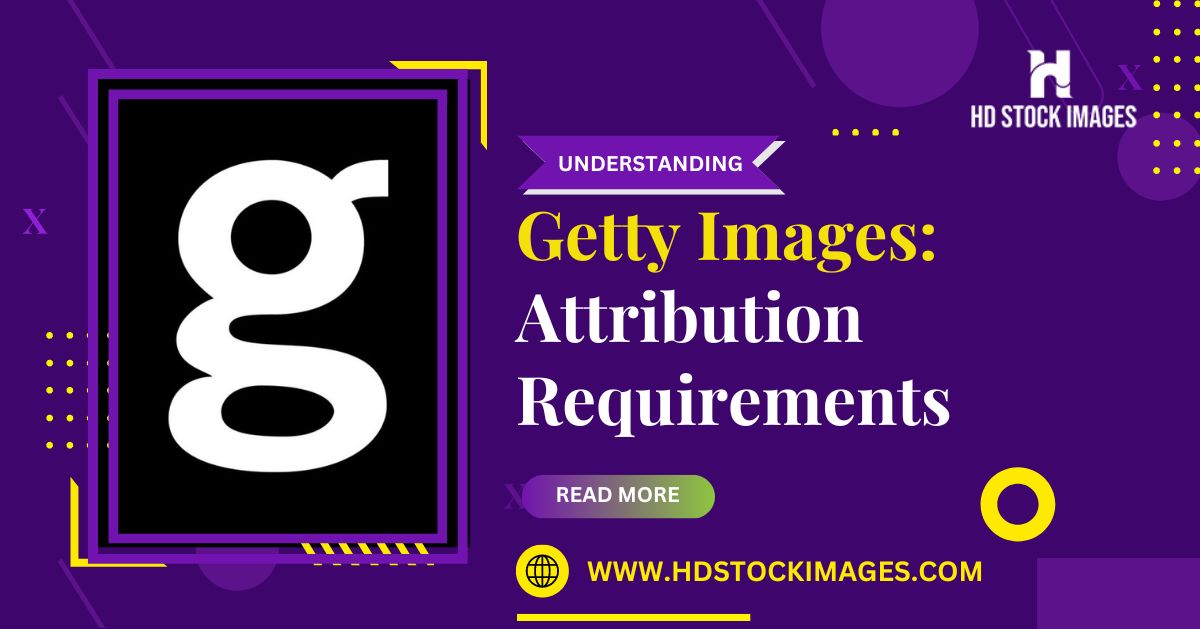I. Introduction
In today's digital age, images play a pivotal role in captivating audiences and enhancing content across various platforms. As content creators seek the perfect visual accompaniment, stock image libraries like Getty Images have become indispensable sources. However, with the privilege of using these images comes the responsibility of adhering to proper attribution requirements.Understanding and complying with these attribution guidelines not only upholds copyright laws and intellectual property rights but also fosters positive relationships with content creators and stock image platforms. This blogpost will delve into the intricacies of Getty Images' attribution requirements, highlighting best practices and common mistakes to equip creators with the knowledge to ethically and legally use these valuable resources.Also Read This: Mastering Storyblocks After Effects Templates for Unique Edits
II. What is Getty Images?
 Getty Images is a renowned and leading provider of high-quality stock images, videos, music, and other multimedia content to content creators, businesses, and individuals worldwide. Founded in 1995, the company boasts an extensive collection of millions of diverse and professionally curated visuals sourced from photographers, videographers, and content creators across the globe.Getty Images offers a wide range of licensing options, making it convenient for users to access and utilize their media for various purposes, including commercial projects, editorial publications, marketing materials, websites, and more. Their library covers a vast array of subjects and themes, ensuring that there is an image or video for practically any creative need.As one of the most reputable and reliable stock image platforms, Getty Images continues to shape the visual landscape of digital media and remains a preferred choice for content creators seeking high-quality and legally compliant visuals.
Getty Images is a renowned and leading provider of high-quality stock images, videos, music, and other multimedia content to content creators, businesses, and individuals worldwide. Founded in 1995, the company boasts an extensive collection of millions of diverse and professionally curated visuals sourced from photographers, videographers, and content creators across the globe.Getty Images offers a wide range of licensing options, making it convenient for users to access and utilize their media for various purposes, including commercial projects, editorial publications, marketing materials, websites, and more. Their library covers a vast array of subjects and themes, ensuring that there is an image or video for practically any creative need.As one of the most reputable and reliable stock image platforms, Getty Images continues to shape the visual landscape of digital media and remains a preferred choice for content creators seeking high-quality and legally compliant visuals.Also Read This: How to Post a YouTube Video from Your iPhone
III. Understanding Attribution Requirements
When using images from Getty Images, it is crucial to comprehend the attribution requirements associated with the various licensing options offered by the platform. Proper attribution is a means of giving credit to the content creators and acknowledging their intellectual property rights. It ensures transparency and maintains a fair and ethical relationship between content users and creators.A. Types of Licenses and Attribution Requirements:
| License Type | Attribution Requirements |
|---|---|
| Royalty-Free | Attribution should be provided adjacent to the image or in the image caption, following the format specified by Getty Images. |
| Rights-Managed | Attribution requirements may vary depending on the usage and should be adhered to strictly. The attribution guidelines are usually detailed on the Getty Images website or can be obtained when licensing the image. |
B. Instances Requiring Attribution:
Attribution is essential whenever an image from Getty Images is used, regardless of the licensing type, unless explicit permission to forgo attribution is granted through extended licensing or other arrangements.C. Elements to Include in Attribution:
When providing attribution, key elements typically include: - Name of the content creator (photographer, videographer, etc.) - Title or description of the image - "Image provided by Getty Images" or similar wording to acknowledge the sourceD. Proper Placement of Attribution:
Attribution should be placed in a clear and visible location, ensuring it is easily associated with the image. The exact positioning and formatting may be specified by Getty Images or can be found in their attribution guidelines.Complying with these attribution requirements not only respects the rights of the content creators but also contributes to maintaining a thriving creative ecosystem and upholding the principles of ethical content usage. By understanding and adhering to these guidelines, content creators can confidently incorporate Getty Images' visuals into their projects while remaining respectful of the original artists' contributions.The following video is about Getty Images:Proper attribution of Getty Images' content carries numerous advantages for both content creators and the broader creative community. Understanding and fulfilling attribution requirements not only comply with legal obligations but also foster a positive and respectful environment for content usage. Here are some key benefits of providing proper attribution:A. Respecting Copyright and Intellectual Property Rights: Proper attribution acknowledges the hard work and creative effort invested by content creators. It shows respect for their copyright and intellectual property rights, ensuring that their contributions are recognized and protected.B. Building Positive Relationships with Content Creators and Platforms: By giving credit where it is due, content creators and stock image platforms like Getty Images develop a positive relationship with users. This goodwill may result in more collaborations, access to exclusive content, and improved services for content creators in the future.C. Encouraging Ethical Content Usage: Attribution requirements promote ethical content usage and discourage unauthorized or unethical practices. This fosters a culture of responsible content creation and distribution within the creative community.D. Avoiding Legal Issues and Potential Penalties: Failure to provide proper attribution can lead to legal repercussions, including copyright infringement claims. Complying with attribution requirements ensures content users are protected from legal disputes and potential financial penalties.E. Enhancing Brand Reputation: Businesses and content creators who consistently provide proper attribution demonstrate professionalism and a commitment to ethical practices. This enhances their brand reputation and credibility among their audience and peers.F. Supporting Content Creators' Livelihood: Proper attribution helps content creators gain exposure and recognition for their work. When their images are used with correct attribution, it can drive more traffic to their portfolios and potentially lead to additional opportunities or sales.G. Inspiring Collaboration and Creativity: Attribution creates a collaborative environment where content creators are encouraged to share their work, knowing that their contributions will be properly acknowledged. This exchange of creativity can inspire new ideas and foster innovation in the creative community.In conclusion, providing proper attribution for Getty Images' content is a small but essential step towards upholding ethical content practices and respecting the rights of content creators. By doing so, content creators, businesses, and individuals contribute to a thriving and supportive creative ecosystem that benefits everyone involved.โหหหหห พึ่งรู้ว่าลุคนี้มี Getty Images ถ่ายไว้ หน้าชีคือออออ ❤️🔥❤️🔥❤️🔥 pic.twitter.com/Pt55uQLYUD
— PHiLIPS• 🌶️ (@PhilipsTakes) July 26, 2023
Also Read This: How to Download Dailymotion Videos to MP3 – Simple Methods for Audio Downloads
V. Attribution Best Practices
Adhering to proper attribution practices is crucial when using Getty Images' content. These best practices ensure that content creators and users maintain a respectful and ethical approach to image usage while complying with licensing requirements. Here are some essential attribution best practices:A. Clear and Prominent Attribution Placement: Ensure that the attribution is clearly visible and prominently placed near the image. It should be easily distinguishable and not overshadowed by other elements on the page.B. Providing Complete and Accurate Information: Include all the necessary elements in the attribution, such as the content creator's name, image title or description, and the statement "Image provided by Getty Images" or equivalent. Double-check for accuracy before publishing.C. Following Specific Attribution Guidelines: Pay attention to any specific attribution guidelines provided by Getty Images for individual images or licensing types. Adhere to these guidelines to meet the platform's requirements.D. Attribution for Social Media and Online Use: When sharing images on social media or websites, include the attribution within the post, caption, or as an overlay on the image itself. Ensure it remains visible even when shared or embedded by others.E. Attribution for Print and Offline Use: In print media or offline materials, place the attribution adjacent to the image, ideally on the same page or in close proximity. Use legible fonts and appropriate sizing for readability.F. Respect License Restrictions: Be aware of any limitations or restrictions associated with the image's license. Some licenses may require specific types of attribution or exclude certain use cases.G. Avoid Removing Watermarks or Copyright Notices: Do not edit, crop, or remove watermarks, copyright notices, or any other identification placed on the image by Getty Images or the content creator. These marks help protect their intellectual property.H. Keep Records of Attribution: Maintain a record of the attributions used for each Getty Images content to facilitate compliance monitoring and avoid inadvertent omissions.I. Use Attribution Generators or Templates: Consider using attribution generators or templates provided by Getty Images or other reliable sources to ensure consistent and accurate attribution across your projects.J. Educate Team Members and Collaborators: If you work with a team or collaborate with others, ensure everyone involved understands the importance of proper attribution and follows the best practices.By following these attribution best practices, content creators and businesses can use Getty Images' content responsibly, respecting the efforts of content creators and contributing to a thriving creative ecosystem while minimizing the risk of legal issues. Proper attribution not only satisfies licensing requirements but also strengthens the ethical foundation of the creative community.Also Read This: How to View Scheduled Posts on the LinkedIn App
VI. Common Attribution Mistakes to Avoid
While providing proper attribution is essential, there are some common mistakes that content creators and businesses should be aware of to ensure compliance with Getty Images' attribution requirements. Avoiding these errors will help maintain a respectful and ethical approach to image usage. Here are the most common attribution mistakes to steer clear of:A. Neglecting Attribution Altogether: One of the gravest mistakes is failing to provide any attribution for Getty Images' content. Even if the image is royalty-free, attribution is often still required, and neglecting to do so can lead to copyright infringement claims.B. Incorrect or Incomplete Attribution: Providing inaccurate or incomplete attribution is another prevalent mistake. Ensure that you include all necessary elements, such as the content creator's name, image title, and the proper credit statement, as specified by Getty Images.C. Misinterpreting Licensing Types: Different licensing types have distinct attribution requirements. Avoid assuming that all images have the same attribution rules. Read and understand the specific guidelines for each licensing type to comply appropriately.D. Using Images without Appropriate Licenses: Utilizing Getty Images' content without acquiring the appropriate license is a serious infringement. Be sure to purchase the correct license for the intended use and comply with the associated attribution requirements.E. Hiding or Obscuring Attribution: Placing the attribution in a way that hides or obscures it from viewers is a common mistake. The attribution should be clear, visible, and easily associated with the image.F. Misusing Watermarked Images: Watermarked images are intended for preview purposes only and should not be used in published content. Using watermarked images without proper licensing and attribution is a violation of copyright.G. Ignoring Specific Attribution Guidelines: Getty Images may have specific guidelines for certain images or licensing types. Disregarding these guidelines can lead to non-compliance, so it's essential to follow them accordingly.H. Removing Copyright Notices: Removing copyright notices or watermarks from Getty Images' content is strictly prohibited. These notices protect the intellectual property of the content creators and should never be altered or removed.I. Delaying Attribution Updates: When making changes or updates to content that includes Getty Images' visuals, ensure that the attribution is also updated accordingly. Timely updates help maintain compliance.J. Overlooking Collaborator Attribution: In collaborative projects, ensure that all contributors are properly attributed, including content creators and team members involved in selecting and using the images.By avoiding these common attribution mistakes, content creators and businesses can confidently use Getty Images' content while respecting copyright and licensing terms. Being diligent and mindful about proper attribution not only safeguards against legal issues but also promotes ethical content practices within the creative community.Also Read This: Account Closure: How Do I Close My Photobucket Account
VII. Creative Commons and Public Domain Images
 In addition to using images from stock image platforms like Getty Images, content creators have access to a wealth of visuals released under Creative Commons licenses and public domain images. Understanding the distinctions between these types of images is essential for responsible and legal image usage. Here's an overview of Creative Commons and public domain images:
In addition to using images from stock image platforms like Getty Images, content creators have access to a wealth of visuals released under Creative Commons licenses and public domain images. Understanding the distinctions between these types of images is essential for responsible and legal image usage. Here's an overview of Creative Commons and public domain images:
 admin
admin








